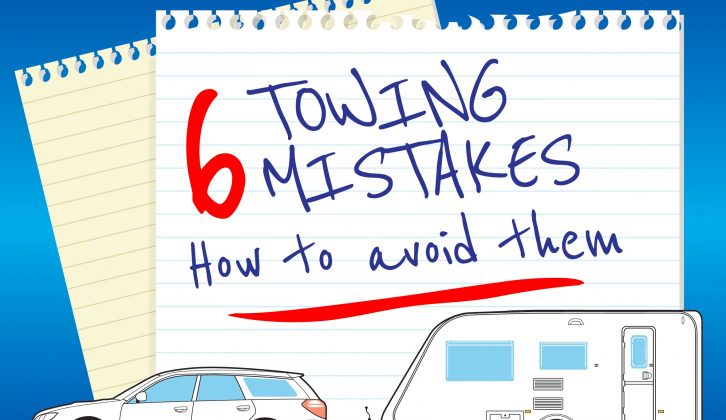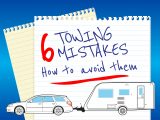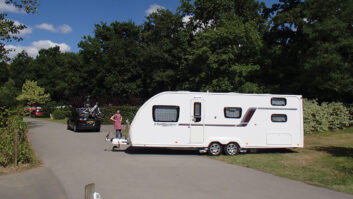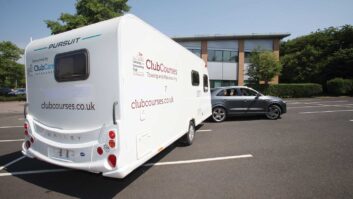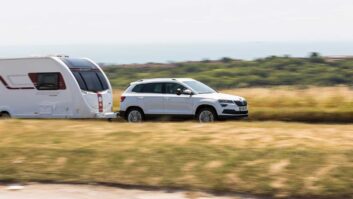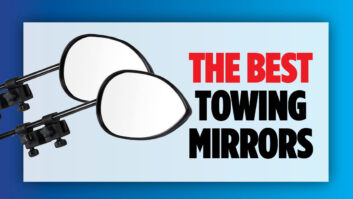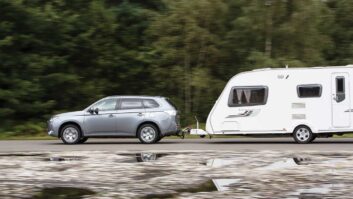Towing a caravan is more challenging than regular driving.
The combined weight of tow car and caravan could be nearly double the weight of the car on its own, the vehicle length will more than double, and to make life more interesting there’s a big hinge in the middle.
It’s no wonder newcomers to caravanning may find towing intimidating.
The truth is, towing a caravan safely and confidently shouldn’t be beyond the capability of any competent driver.
But there are many traps it’s easy to fall into, whether you are new to towing or have simply developed some bad habits.
Here are six common towing mistakes to avoid.
1 – Misunderstanding the 85% rule
I probably receive more emails and letters about the ‘85% rule’ than any other subject.
Let’s clear one thing up straight away – it’s a guideline rather than a hard and fast rule.
It’s important to draw this distinction as many new caravanners believe they are breaking the law if they tow a caravan which weighs more than 85% of the kerbweight of their tow car.
Both major caravanning clubs recommend towing no more than 85% of the kerbweight for stable towing, especially for inexperienced tow car drivers.
But both clubs also consider it acceptable for experienced drivers to tow up to (but not over) 100% of the kerbweight of their tow car.
Whichever guideline applies to your level of towing experience, the legal towing limit of the tow car shouldn’t be exceeded.
Not all cars – especially small and light models with modest power outputs – can legally tow an 85% match.
The 85% guideline has served caravanners well for years, but it is often misunderstood, or mistakenly considered to be the be-all and end-all of safe towing.
2 – Ignoring the importance of safe loading
Sometimes I worry that too much emphasis is placed on matching ratios at the expense of other factors which contribute to safe towing.
Loading is one of them. Heavy items should be kept low down and close to the axle (that goes for inside the car as well as the caravan, by the way).
You don’t want big, heavy bags sliding around inside the caravan, so invest in some means of restraining them such as cargo bars from the likes of Milenco.
If your caravan has a fixed bed at the back, it’s tempting to keep everything neat and tidy by loading under the mattress – but I wouldn’t want anything much heavier than spare bedding at the back of the van.
If you cram the underbed storage with food, clothes, awnings and more you’ll be weighting the van like a pendulum, seriously increasing the risk of instability.
You could be well within the 85% matching guideline, but by loading so poorly, the caravan could be made unstable.
3 – Excessive speed
Over-confidence is your enemy when towing. If you are used to driving at 70mph on the motorway, 60mph can seem very tame.
It can be tempting to speed up a bit, and push on towards the kind of speeds you’d cruise at in solo driving.
It’s a temptation that should be avoided.
Firstly, it’s illegal. Being pulled over and given a ticket isn’t a great start to a family holiday.
Secondly, the faster you go the greater the chance of snaking. A car and caravan combination that feels rock-solid at 60mph could be wandering over the road at 70mph.
Even if the outfit still tracks straight and true over the speed limit, it might not be that way if you overtake a high-sided vehicle or the wind suddenly picks up.
It’s better to leave a healthy safety margin, and that means sticking to the limit – or even driving more slowly if the conditions are bad.
4 – Not using extension mirrors
It’s surprising just how many caravanners don’t use extension mirrors.
They’re not a legal requirement as such, but the law does require that you can see four metres from the side of the caravan at a distance 20 metres behind the driver.
Some drivers, especially owners of big and wide 4x4s, believe they can see adequately without towing mirrors.
But even big SUVs are narrower than a typical caravan so, in effect, towing extension mirrors are a must.
5 – Failing to check tyre pressures
Another bugbear is failing to check tyre pressures.
Most cars have different recommended pressures for towing or driving when heavily loaded – check the caravan tyres are at the correct pressures, too.
Under- or over-inflated tyres won’t handle as well, and could make an outfit less stable. In extreme circumstances, a tyre could even fail.
6 – Underestimating the value of instruction
There’s nothing wrong with asking for help. In fact, when it comes to towing, it’s the smart thing to do.
Both big clubs offer courses to sharpen up your towing skills. The Caravan and Motorhome Club runs two-day courses for newcomers to caravanning, which cost £175, and six-and-a-half-hour-long courses for more experienced drivers, costing £150.
The Camping and Caravanning Club beginner’s course costs £150 for members, and its more advanced course costs £165.
Paying for professional instruction is money well spent. What’s more, if you have a B driving licence, a beginner’s course can be a useful stepping-stone to taking your test to upgrade to a B+E licence, so you can tow heavier car and caravan combinations.
Whether you are new to towing or just want to iron out bad habits, I’d thoroughly recommend a towing course to make you a more confident, more safe driver.
There's nothing wrong with asking for help
